Particulate Filtering Facepiece Respirators
Jan 13, 2021
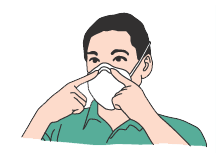
Particulate filtering facepiece respirators are considered "air purifying respirators," because they remove microscopic particles (0.3 microns) from the air as you breathe.
Particulate filtering facepiece respirators generally are made of a cloth-like material. The facepiece also may have an exhaustion valve, which reduces excessive dampness and warmth in the mask from exhaled breath.
They also are equipped with two straps, one that is placed around the neck and the other around the top back of the head.
Always inspect the respirator prior to use. If it appears to be damaged, do not use the respirator.
Follow these basic steps to wear a particulate filtering facepiece respirator properly.
1. Choose the appropriately-sized facepiece.
2. Cup the respirator in your hand allowing the straps to fall below. Hold the respirator under the chin with the nose piece up.
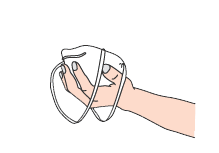
3. Place the top strap over the top back of the head, and pull the bottom strap around the neck and below the ears.
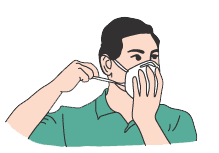
4. Take your fingertips and place them at the top of the metal nose clip. Slide the fingers down the nose to shape the clip to your nose.
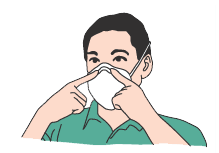
5. Perform a seal check.
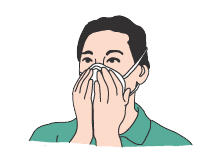
Source: Joe Mlynek is president of Progressive Safety Services LLC, Gates Mills, OH; joe.mlynek@progressivesafety.us; and content creation expert for Safety Made Simple, Inc., Olathe, KS; joe@safetymadesimple.com
Particulate filtering facepiece respirators generally are made of a cloth-like material. The facepiece also may have an exhaustion valve, which reduces excessive dampness and warmth in the mask from exhaled breath.
They also are equipped with two straps, one that is placed around the neck and the other around the top back of the head.
Always inspect the respirator prior to use. If it appears to be damaged, do not use the respirator.
Follow these basic steps to wear a particulate filtering facepiece respirator properly.
1. Choose the appropriately-sized facepiece.
2. Cup the respirator in your hand allowing the straps to fall below. Hold the respirator under the chin with the nose piece up.

3. Place the top strap over the top back of the head, and pull the bottom strap around the neck and below the ears.

4. Take your fingertips and place them at the top of the metal nose clip. Slide the fingers down the nose to shape the clip to your nose.

5. Perform a seal check.

- Positive pressure check - cover the mask lightly with both hands, and deliberately breathe out.
- Negative pressure check - cover the mask lightly with both hands and deliberately breathe air in. The mask should depress slightly inward.
Source: Joe Mlynek is president of Progressive Safety Services LLC, Gates Mills, OH; joe.mlynek@progressivesafety.us; and content creation expert for Safety Made Simple, Inc., Olathe, KS; joe@safetymadesimple.com